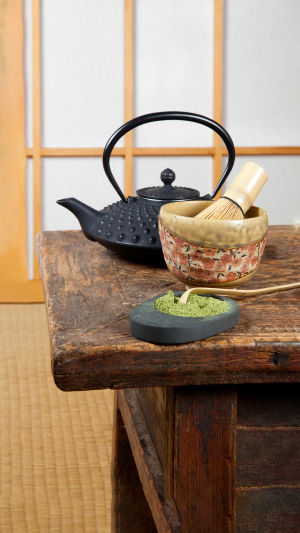Matcha has been receiving a lot of love from many people, it is very flavorful, and matcha-flavored desserts and drinks are very delicious.
Is matcha green tea? Why is there such a big difference in flavor between matcha and green tea?
Matcha is a type of green tea, but there is indeed a significant difference in flavor between matcha and other forms of green tea.
To begin with, matcha is made from shade-grown tea leaves, which are carefully selected and harvested just before reaching full maturity.
The shading process increases the chlorophyll content in the leaves, giving them a vibrant green color and enhancing the tea's flavor.
By contrast, regular green tea is typically made from sun-grown leaves, which have a lower chlorophyll content and result in a milder taste.
Another key distinction lies in the production process. Matcha undergoes a distinctive method where the harvested leaves are steamed, dried, and finely ground into a powder.
This powder is then whisked into hot water during the preparation, resulting in a thicker and more concentrated beverage.
On the other hand, traditional green teas are made by infusing whole or broken leaves, which are later discarded, giving a lighter and less concentrated flavor.
The finely ground nature of matcha also contributes to its unique taste. When consuming matcha, we ingest the whole leaf, allowing us to fully experience the tea's flavor profile. This includes both the desirable sweet, umami notes and any potential bitterness or astringency.
In contrast, regular green tea is typically brewed using only the water-soluble compounds of the leaves, resulting in a milder and less complex taste.
Furthermore, matcha has a distinctively rich and creamy texture, which further sets it apart from other green teas.
This unique mouthfeel is a result of the presence of amino acids, particularly L-theanine.
The shading process of matcha cultivation enhances the production of these amino acids, resulting in a sweeter and smoother taste profile.
Regular green teas, on the other hand, may have a lighter and crisper mouthfeel due to a lower concentration of amino acids.
It is essential to mention that subjective factors such as personal preferences and brewing techniques can also affect the perception of flavor differences between matcha and regular green tea.
In conclusion, while matcha is a type of green tea, there are several factors contributing to its distinct flavor profile.
The shade-grown leaves, unique production method, fine grinding, and higher concentration of amino acids all play a role in creating matcha's vibrant green color, complex taste, and creamy texture.





